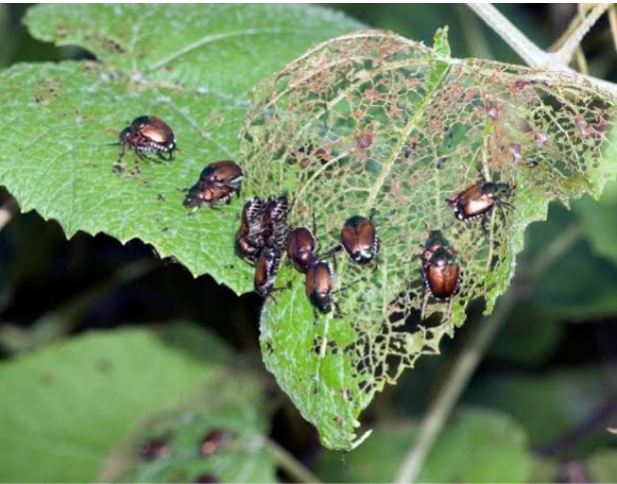
For centuries, farmers in the tropics have harvested low yield due to the following factors
a) depletion in soil nutrients
b) incidence of pest and diseases
c) adamant nature of farmers to adopt new technologies ( that is, improved varieties)
d) poor storage system
e) lack of mechanised practices
f) weather effect etc.
Pest and diseases are the major yield reducing factor which can affect the growth of crops in all production circumstances. Crops loss occur in both quantitative and qualitative manner.
When the damage threshold is known, and a disease or pest is present, the farmer must know when and how to act.
The Ultimate aim of pest and disease study is to involve economic control measures for the pest or pathogen inorder to improve the crop yield and food production.
PESTS.
A pest is any animal, plant or microrganisms that causes damage to crops or livestock. Common Agricultural pests are mammals, birds, insects, weeds and microorganism like fungi, nematode, bacteria or virus, fish, rodent, mollusc or even a deer.
REASONS WHY PESTS ARE UNDESIRABLE
Pests are unwanted or undesirable because they:
a) reduce the availability, quality, or value of human food, animal feed, water, or space;
b) injure humans, animals, crops, structures, and possessions;
c) spread or cause disease; or
d) interfere with human activities by causing annoyance, discomfort, or inconvenience
TYPES OF PESTS AND DAMAGES THEY CAUSE
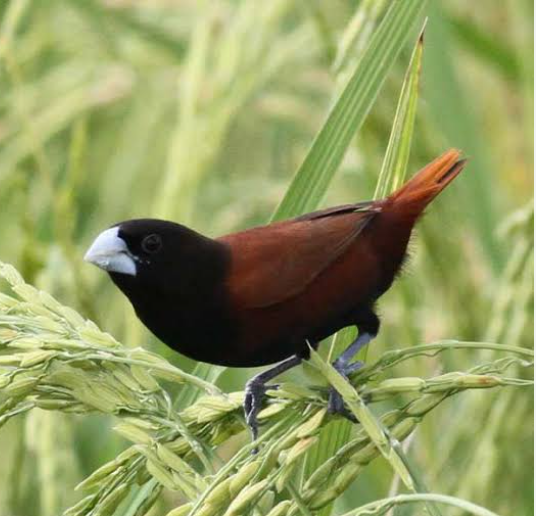
1. BIRDS: The most important of the birds are the village weever bird ( Ploceus cucullatus) and Quelea quelea . They are serious pest of all crops all over the world. They damage crops at all levels of growth by:
a) eating up broadcasted seeds
b) dig up already planted seeds. For example, bush fowl and pigeons
c) eat up germinating seedlings
d) pick and suck milk from young seeds during milking period
e) at crop maturity, they feed on the grains on field.
f) they sweep off arm leaves to make their nests etc
Many kinds of birds attack cereal crops, fruit crops, legumes and vegetable crops. They feed on the the cereals and legumes at the milky stage and on the developed grains. The ripe fruits and fruit vegetable like pawpaw and tomatoes respectively are palatable to their taste.
2. RODENTS: They include the roof rats/ship rats, Norway rats, giant rats, bush rats, grasscutter, and rabbits. Thay are pest of cereals like maize,. They cut down the cereal plant stem into smaller pieces and suck the juice or sap from the cut stem Some rodents destroy transplanted seedlings of crops in their early stage. For example, palm seedling. Grasscutter prefer vegetative parts of crops like cassava, bush rats burrow into the soil to feed on tubers such as yam, cassava and potatoes etc.
Rodents are field to storage pests.
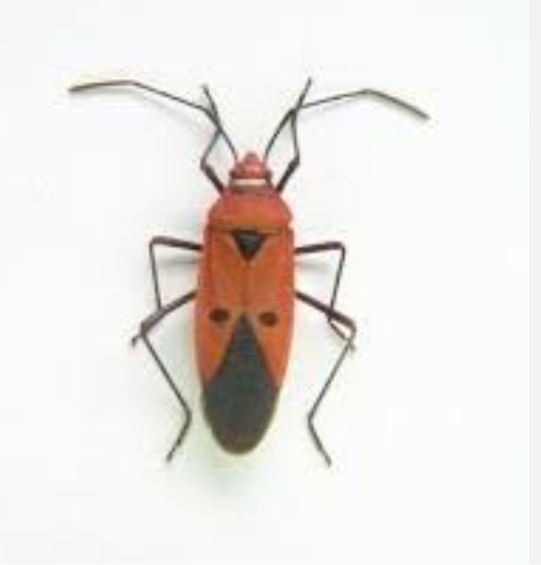
3. INSECTS: This is the most serious of Agricultural pest which inflict damage on both crops and Livestock. On crops, Insects are responsible for two major kinds of damage :
a) DIRECT EFFECT OF INSECT ON CROPS
The direct damage insect do on plants are the damages done to parts of the plant to be harvested. For example, damage to fruits of Citrus or tomatoes, yam tubers etc.
Direct injury is done to the plant by the feeding insect. They eat up the leaves or burrow into the stems, fruit, or roots. There are hundreds of pest species of this type, both in larvae and adults stages
b) INDIRECT EFFECT OF INSECT ON CROPS
Indirect damage is the damage the insect Causes on parts of the plant not harvested. For example, damage to leafvrs of tomatoes preventing photosynthesis to occur.
I) indirect damage in which the insect itself does little or no harm but transmits a bacterial, viral, or fungal infection into a crop. For example, wasp which transmit the coffee leaf rot
II) infestation result in contermination and losses of quality in crops. Such quality may be reduction in nutritional values or market value
III) Some insect produces stain saliva on crops, staining the fruits. For example cotton stainer (Dystercus spp)
Examples of insect pests include leaf- and flower-eating caterpillars and beetles, bark borers, scales, leaf mites, fruit-sucking bugs, fruit-piercing moths and fruit flies etc.
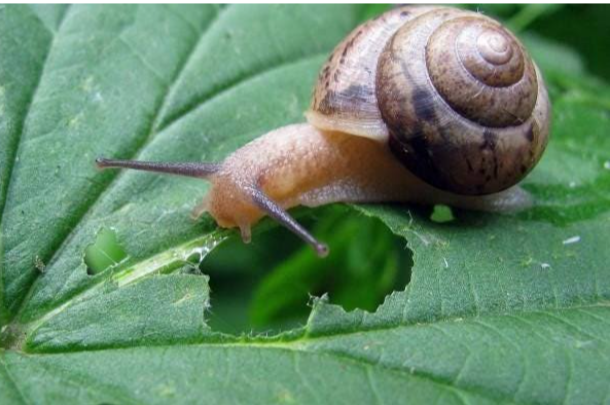
4. MOLLUSC: This is the group where the snails belong. They are soft bodied animals which are aquatic or terrestial. They may or not possess shell. They include land snails, slugs, octopus etc. Snails are nocturnal animals. They eat up the leaves, flowers and fruits of crops.
5. WEEDS : These are plant pests. They compete with crops for space, air, water, nutrients and sunlight. The herbour insect pests which attack crops on field. They also interfere with activities of man. Some of the causes injury to livestock. Example is witch weed ( Striga spp) . This is a very important parasitic plant which severely reduce the yield of attacked host plant. There are three species of Striga. Striga hermonphica – which attack millet, rice, maize and sugarcane. Striga aspera- which attack maize and Striga gesnerioibes- which attack cowpea.
6. NEMATODES: They are the most abundant animal life form. They outnumber the insects interms of species and individual number. They are found in air, soil, on top of mountains, and bottom of the seas and oceans. They inhabits all plants and Animal tissues. The phytonematodes are the nematodes that attack plants.
INSECT PEST.
Insect pest are small organisms with body parts divided into three: head, thorax and abdomen. Some of them possess wings such as grasshoppers while some do not. They possess three piers of legs and varying mouth parts. Examples of common insect pest are grasshoppers, weevils, cotton stainer, and beetles etc.
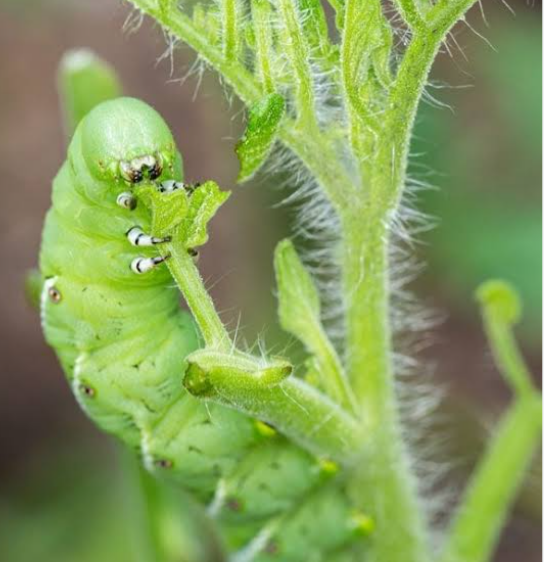
CLASSIFICATION OF INSECT PESTS
1. CLASSIFICATION BASED ON THEIR MODEL OF FEEDING
According to their mode of feeding insect pest are classified into three groups. These are:
Biting and chewing insect pests
Piercing and sucking insect pests
Boring insect pests
BITTING AND CHEWING INSECT PESTS
Insect pests in this group have mouth parts which are specially made for biting and chewing plat. The mouth parts of insect in this group are adapted for biting and chewing things. Their mouth part consist of a pair of very hard biting jaws called mandibles, a second pair of jaw called maxillae, flat upper lip called the labrum and lower lip known as labium. The mandibles are sued to bite off and chew parts of the crop while maxillae are used to bite off and chew parts of the crops into the mouth. Examples of biting and sucking insects pests are crickets, grasshoppers, beetle, termites, army worm, mantils.
They damage plants in the following ways:
a) they reduce the number of leaves available for photosynthesis by making holes on leaves. example include Zonocerus grasshopper.
b) Some insects tunnel within the cell and cause interruption of the sap flow causing root tip and apical death of the plant. For example stem borers
c) insects destroy pods at growing points causing stunted Ness of the plants
d) Some insects bore into the fruits and suck the fruit juice making them not marketable.
e) some insects attack flowers causing flower abortion
f) some insects suck sap from from the seed making it to shrivel or wrinkle etc.
PIERCING AND SUCKING INSECT PESTS
Insect with piercing and sucking mouth parts Causes losses of plant vigour due to the removal of sap from the plant and as a result wilting result.
The insects in this group have mouth part that are shaped like injection needles, called proboscis. Hence, their mouth parts are adapted to pierce into plant parts and suck the sap and juice of plant. Example of piercing and sucking insects include aphids, cotton stainer, mealy bugs, white flies and capsids.
Some of the damages caused by these insects are :
a) some of them inject toxins into the plant and hence, Causes distortion or necrosis
b) they provide entry points for pathogenic fungal and bacteria
BORING INSECTS
These are insects that bore hole into plants tissues and seeds. Boring insects are also called burrowing insects. Examples of boring insects are beans beetles, rice weevils, maize weevils and stem borers.
The damages they cause include:
a) bore holes into stored grains reducing their market value
b) they also reduce the nutritional value of grains
c) they can reduce dry grains to powder form.
CLASSIFICATION OF INSECT BASED ON THEIR LOCATION
Based on location, insect pest are classified into two namely:
Field insect pests
Storage insect pests
Field to storage insect pest.
FIELD INSECT PEST: These are insects that attack crop plant on the field. That is, before harvesting the crops. Important field pest include: Stem borers, beetle, fruit flies and fruit piercing insects and yam beetles etc
STORAGE INSECT PESTS: This group of insect attack harvested produce in store. Examples include bean beetle, weevils rice and maize weevils etc
FIELD TO STORAGE INSECT PESTS: These are insect pest that start their damages on crops from the field and continue the damage in the stored produce. Examples are weevils, beetles etc.
CONTROL OF PESTS
1. CONTROL OF BIRD PEST
-By aerial spraying with avicides,
– Baiting with poison,
-Use of bird scarer,
-Use of scare crows,
-Prompt harvesting that is early harvesting
2. CONTROL OF RODENT PEST
-Field hygiene,
-Use of nets, fencing and scare crows,
-Use of traps, sness, hunting and bait with poison,
-Use of rodenticide
3. CONTROL OF INSECT PEST : This would be explained under general control of pest explained below 4. CONTROL OF NEMATODES: Biological control measures using resistant plant varieties and trap crops have been effective in controlling nematodes
GENERAL PRINCIPLES AND METHODS OF PEST CONTROL
The general principles of pest control are based on reducing the pests to a low level of population so that the losses incurred is made to the bearest Minimum. To achieve effective control of pests, the agriculturist need to recognise the various type of pests, the nature of damage the pest Causes and the time they attack the plant.
Pest Control is done inorder to achieve these three Goals:
a) prevention – keeping a pest from becoming a problem.
b) suppression – reducing pest numbers or damage to an acceptable level, and .
c) eradication – destroying an entire pest population.
They general control measures can be grouped into the following :
1. Cultural methods
2. Biological methods
3. Chemical methods
4. Mechanical methods
5. Integrated pest control methods
6. Quarantine
1. CULTURAL METHODS
This involves the application of correct farm operations aimed at enabling the crop to escape attack. Such operations include:
Crop rotation, tillage operations, adequate spacing of crops and correct seed rate per hectare, timing of planting and frequent weeding, planting of resistant varieties .
2. BIOLOGICAL CONTROL METHODS
This is the use of living organisms to control pests. It involves the introduction of parasites, predators and diseases which are the natural enemies of pests. For example lady bettle ( Vedalia cardinals) is used to control cushion scale ( Iceryo purchasi), African marigold is used to control soil nematodes. Rodent pests can be controlled by adopting a cat as a means of managing your rodent problem. Another example is a biological poison called bacterium Bacillus thuringiensis ( called BT), it is a bacteria used in controlling insect infestations including: Caterpillars, Gypsy moth larvae, Mosquitoes, and Colorado potato beetles. Use of trap crop ( sacrificial crops) to control insects. The major disadvantage of this method is that the new organisms thus introduced can start to attack crops being protected. While the advantage over other control method is that it is more environmentally friendly than other types of methods to kill pests because it only targets the specific pests and does not cause pollution.
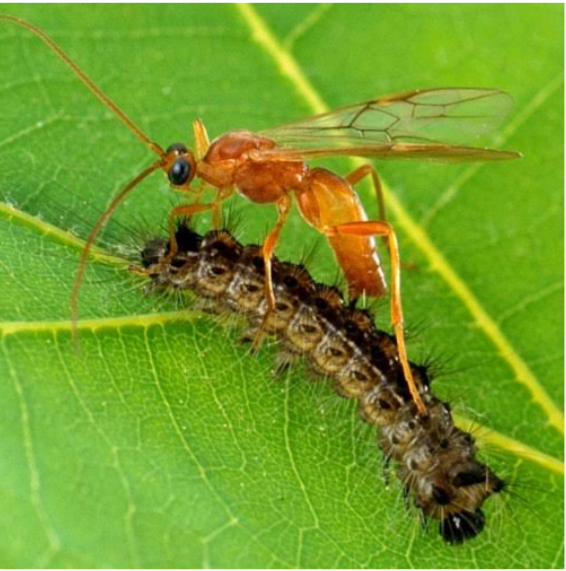
3. CHEMICAL CONTROL METHOD
To protect the crops from pest attack, pesticides are sprayed on the crops before the pest attack them. But when the attack had been established, the pesticides are sprayed to kill the pests and prevent further spread.
Pesticides are chemicals used to control pests. They may be natural or synthetic pesticides. The major disadvantages in the use of pesticides is that pest can develop resistance against the pesticides. The pesticides can also pollute the environment. While the advantages include: They are quick acting, very effective, and readily available for use.
There are different pesticides used for different pest. Insecticide is used for controlling insect, avicide for controlling birds, Ascaricide for controlling ascaris, Moluscide for controlling molusc, fungicides for controlling fungi, Rodenticide for rodents, bactericide for bacteria, Nematicides for nematodes and herbicides for weed pest.
4. MECHANICAL CONTROL METHODS
Mechanical pest control involves the use of devices and equipment in order to control pest problems. For example, thermal pest control uses heat to kill termites, bed bugs and other insects.
The advantage of heat treatments is that it can be completed in one day, meaning no moving out and no harmful chemicals involved. Another advantage to mechanical pest control methods is that portions of large structures can be treated separately. Other mechanical pest control methods include Floating row covers,
Mechanical (non-poisonous) traps (e.g. shingle traps, glue traps and pheromone traps ),
Ultrasonic pest repellant devices (or electronic pest control), Water pressure spray and Insect vacuums devices.
5. INTEGRATE PEST CONTROL METHODS
This is the combination of two of any of the control methods to form a single control unit to control pests. For example, combination of both cultural and chemical methods ( that is hand picking and spraying of moluscide) to control snail pest.
6. QUARANTINE
For the Agriculture sector of a country to develop, there is the need to introduce new varieties of crops and Livestock into the country. However, there is the danger of introducing serious diseases, pests and noxious Weeds along side with the imported new varieties. Quarantine measures should therefore be put in place by the country to check every imported agricultural materials.
